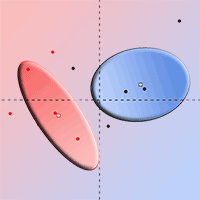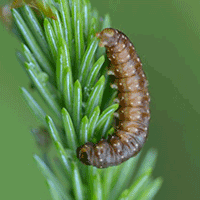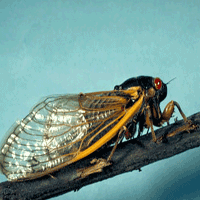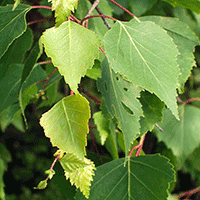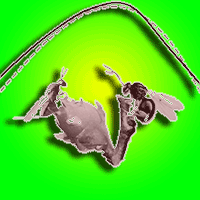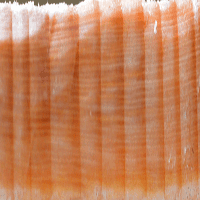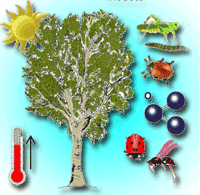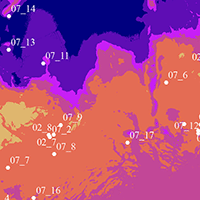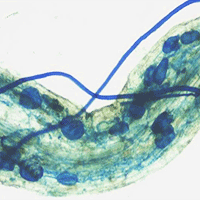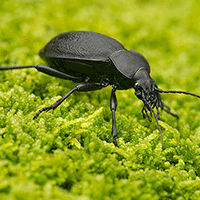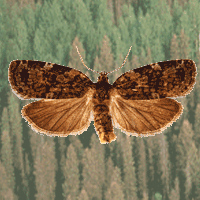
Spruce budworm biological and nutritional performance responses to varying levels of monoterpenes
iForest - Biogeosciences and Forestry, Volume 6, Issue 6, Pages 310-314 (2013)
doi: https://doi.org/10.3832/ifor0956-006
Published: Jul 16, 2013 - Copyright © 2013 SISEF
Research Articles
Abstract
Dose effect of six monoterpenes (α-pinene, bornyl acetate, camphene, δ-3-carene, terpinolene, tricyclene) found in the foliage of host trees was tested on sixth-instar spruce budworm (Choristoneura fumiferana (Clem.)) using artificial diet. The larval mortality, growth and food utilization have been observed. Two monoterpenes, α-pinene and δ-3-carene caused 22 and 12% mortality respectively at concentrations found in balsam fir foliage. Bornyl acetate and camphene reduced larval survival when their concentration was higher than the foliage. Terpinolene and tricyclene have no effect on mortality. All six tested monoterpenes reduced larval growth rate. Spruce budworm tried to minimize this negative growth impact by increasing his digestibility in presence of camphene and δ-3-carene, and by increasing his efficiency of conversion of ingested-digested food with α-pinene and bornyl acetate. These results support the traditional theory that monoterpenes are a defense agent against spruce budworm and that each monoterpene has a different mode of action and effects which are not necessarily proportional to its concentration.
Keywords
Authors’ Info
Authors’ address
Faculty of Forestry, Istanbul University, 34473 Bahçeköy, Istanbul (Turkey)
Département des Sciences du Bois et de la Forêt, Faculté de Foresterie et de Géomatique, Université Laval, G1V 0A6 Québec, QC (Canada)
Corresponding author
Paper Info
Citation
Kumbasli M, Bauce É (2013). Spruce budworm biological and nutritional performance responses to varying levels of monoterpenes. iForest 6: 310-314. - doi: 10.3832/ifor0956-006
Academic Editor
Massimo Faccoli
Paper history
Received: Jan 24, 2013
Accepted: Apr 09, 2013
First online: Jul 16, 2013
Publication Date: Dec 02, 2013
Publication Time: 3.27 months
Copyright Information
© SISEF - The Italian Society of Silviculture and Forest Ecology 2013
Open Access
This article is distributed under the terms of the Creative Commons Attribution-Non Commercial 4.0 International (https://creativecommons.org/licenses/by-nc/4.0/), which permits unrestricted use, distribution, and reproduction in any medium, provided you give appropriate credit to the original author(s) and the source, provide a link to the Creative Commons license, and indicate if changes were made.
Web Metrics
Breakdown by View Type
Article Usage
Total Article Views: 52337
(from publication date up to now)
Breakdown by View Type
HTML Page Views: 44199
Abstract Page Views: 2947
PDF Downloads: 3741
Citation/Reference Downloads: 18
XML Downloads: 1432
Web Metrics
Days since publication: 4530
Overall contacts: 52337
Avg. contacts per week: 80.87
Citation Metrics
Article Citations
Article citations are based on data periodically collected from the Clarivate Web of Science web site
(last update: Mar 2025)
Total number of cites (since 2013): 12
Average cites per year: 0.92
Publication Metrics
by Dimensions ©
Articles citing this article
List of the papers citing this article based on CrossRef Cited-by.
References
One and 2 years impact of commercial thinning on spruce budworm feeding ecology and host tree foliage production and chemistry. Forestry Chronicle 72 (4): 393-398.
Gscholar
Natural resistance of fast growing white spruce, Picea glauca (Moench), trees against spruce budworm, Choristoneura fumiferana (Clem.). In: Proceeding of the International Symposium “Bottlenecks, Solutions, and Priorities in the Context of Functions of Forest Resources” (Demir M, Yilmaz E eds). Istanbul (Turkey) 17-19 October 2007, pp. 687-695.
Gscholar
Different responses of two carbon-based defences in Scots pine needles to nitrogen fertilization. Écoscience 5 (4): 502-507.
Gscholar
Biology of North American spruce budworms. In: “Tortricid Pests, their Biology, Natural Enemies and Control” (Van der Geest LPS, Evenhuis HH eds). Elsevier Science Publishers BV, The Netherlands, pp. 579-620.
Gscholar

